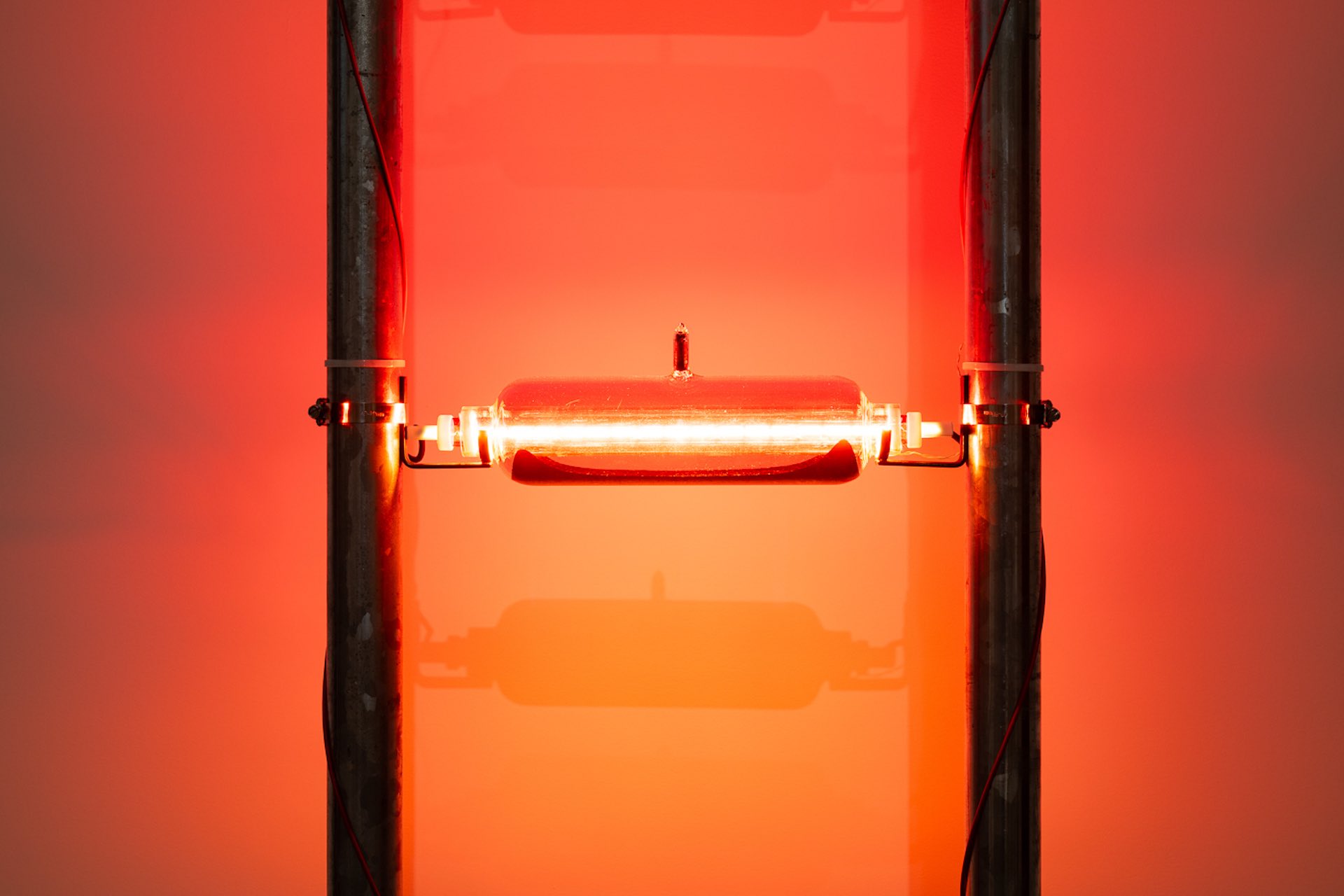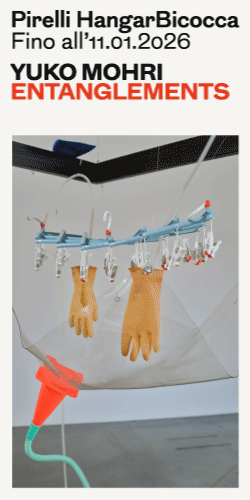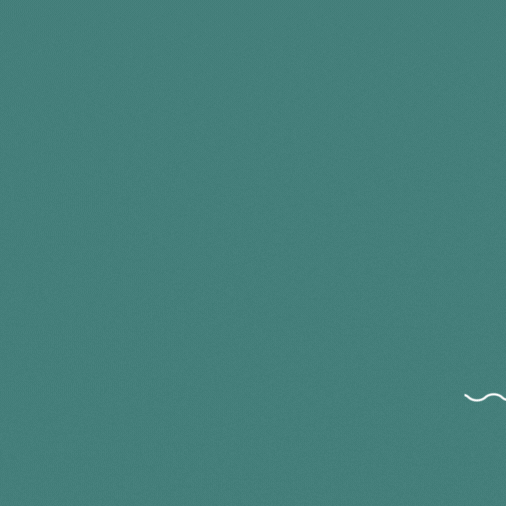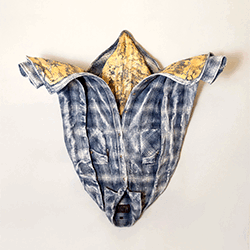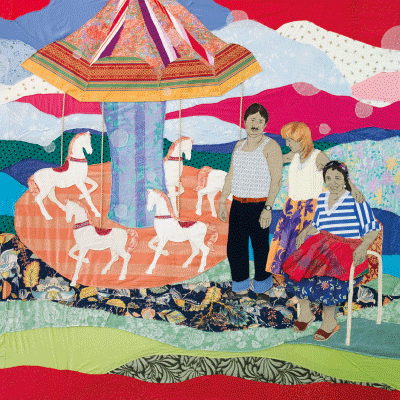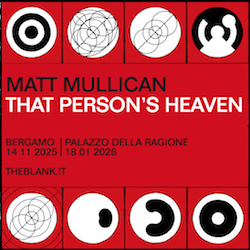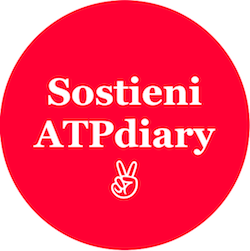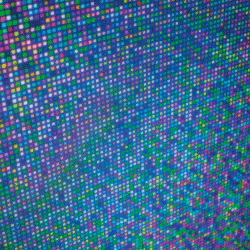English text below —
C’è qualcosa di paradossale, di irriducibilmente doppio, nell’incontro con le opere di Hamad Butt (1962–1994): una bellezza tagliente che seduce e respinge, che attrae come un laboratorio alchemico e inquieta come un monito postumo. Apprehensions, la mostra che la Whitechapel Gallery di Londra dedica all’artista britannico-pakistano a trent’anni dalla morte, è molto più di una retrospettiva: è una riesumazione necessaria, un atto di ascolto verso una voce che il canone degli YBA ha marginalizzato e che oggi, con lucidità chirurgica, ci chiede di ripensare le relazioni tra arte, corpo, tecnologia e malattia.
Butt, morto a soli 32 anni per complicazioni legate all’AIDS, era già, in vita, una figura difficile da collocare: formato a Goldsmiths negli anni in cui prendeva forma la generazione Hirst-Ofili-Lucas, ha scelto un percorso solitario, più vicino alla tensione formale del minimalismo concettuale che allo shock commerciale del contemporaneo britannico. La sua pratica si muove tra scienza e misticismo, tra eleganza e pericolo, facendo del rischio – fisico, estetico, simbolico – la propria grammatica.
Presentare Apprehensions alla Whitechapel (fino al 7/09/25) non è solo un atto filologico, ma una presa di posizione politica e museale: riportare al centro una voce marginalizzata, costruire una contro-storia dell’arte britannica dove la fragilità queer e diasporica non sia un’interruzione, ma un asse fondante. Entrare in questa esposizione significa penetrare in un sistema di congegni che sono dispositivi: apparati di visione, di esalazione, di illuminazione, che sembrano fatti per funzionare più che per essere guardati. In Familiars (1992), forse il suo lavoro più emblematico, tre colonne di vetro contengono gas tossici – cloro, bromina, iodio – resi visibili dal calore e dal mutamento cromatico. L’installazione è tanto precisa quanto perturbante: l’apparente freddezza del display si incrina nel momento in cui si intuisce che ciò che si osserva può uccidere. L’opera qui non rappresenta la malattia, la contiene. Come annota Paul B. Preciado, “il corpo tossico è la nuova figura del sapere. Non è quello che parla, ma quello che irradia (in Testo tossico. Sesso, droghe e biopolitiche nell’era farmacopornografica, Fandango 2015; cit. nel catalogo Apprehensions): nelle opere di Butt, è proprio questo irradiamento silenzioso e pericoloso a produrre conoscenza, a costruire senso oltre la rappresentazione.


“Apprehensions”, scriveva lo steso Butt, “è una nozione esplorativa che opera […] come presa, come afferramento. In quanto la paura afferra la persona, allo stesso modo l’apprensione è la presa ritornante del linguaggio su quell’esperienza pretestuale e post-fisiologica.” (Apprehensions, 1990)
Transmission (1990), lavoro di laurea a Goldsmiths, ne è una soglia fondativa: lastre incise, luci UV, piccole forme di vita imprigionate in teche. È un atlante disidratato, un sistema epistemologico in cui l’arte entra nel campo della biopolitica senza dichiararsi come tale. Anche nei progetti minori – disegni, diagrammi, schemi – si avverte un pensiero che cerca la precisione non per ridurre, ma per intensificare il mistero. Ogni opera è una formula instabile. Ogni materiale – vetro, gas, luce – è un vettore.
Accanto alle installazioni, la mostra riunisce anche una selezione dei dipinti e dei disegni realizzati da Butt negli anni Ottanta: figure maschili isolate, distorte, ferite, spesso tracciate su carta con gesto crudo e colori densi. Sono lavori che portano con sé una tensione psicosessuale palpabile, e che oggi, alla luce delle sue sculture successive, appaiono come prove di esistenza, di desiderio, di disagio. Jean Fisher parlava del lavoro dell’artista come di “una riflessione sulla proliferazione delle fobie” e, nei suoi primi quadri, l’inquietudine è già un codice. I corpi si piegano, si nascondono, si ritagliano nello spazio come presagi. Non c’è racconto, ma un senso di sospensione e di urgenza trattenuta. Anche qui, la figurazione è solo apparente: si tratta, ancora una volta, di dispositivi.
Questa densità concettuale si manifesta con diversa intensità nelle due tappe espositive. Dopo la prima presentazione all’Irish Museum of Modern Art di Dublino (dicembre 2024 – maggio 2025), la mostra approda alla Whitechapel in una forma più spoglia e concentrata. Se al museo irlandese l’allestimento privilegiava l’immersione atmosferica e la penombra contemplativa, a Londra l’intervento curatoriale di Dominic Johnson – autore del saggio principale in catalogo – lavora in sottrazione: asciuga la scenografia e restituisce alle opere il loro potenziale corrosivo. Dove l’IMMA attivava l’empatia, la Whitechapel radicalizza la soglia percettiva: la mostra non commemora, espone. Non ricostruisce, ma lascia esposto ciò che in vita è stato rimosso. Come scrive Johnson, “le opere di Butt sono potenti per come evocano i mondi sociali ai loro margini. […] I suoi scenari sono elettrici nonostante – o proprio per – essere pericolosi.” (I Want to Speak of Fear, 2024). Questa tensione tra intelletto e trauma, tra forma e pericolo, attraversa tutta la pratica di Butt, e si radica nella sua posizione storica.


Nato a Lahore (Pakistan), cresciuto a Londra, Butt si muove tra mondi: tra la diaspora e l’accademia, tra la comunità queer e il laboratorio scientifico. Il corpo, nelle sue opere, non è mai rappresentato ma continuamente evocato: come traccia, come assenza, come pressione materiale. Non c’è figurazione, ma vulnerabilità. È una latenza, una forza differita, una presenza che si attiva nel tempo. Come sostiene José Esteban Muñoz: “queerness is not yet here. Queerness is an ideality. […] It is the warm illumination of a horizon imbued with potentiality (in Cruising Utopia: The Then and There of Queer Futurity, NYU Press, 2009; cit. nel catalogo Apprehensions).”
Se negli Stati Uniti, artisti come Félix González-Torres o David Wojnarowicz rispondono all’AIDS con forme poetiche o militanti, Butt elabora una risposta fredda, invisibile, quasi ascetica. La sua estetica della tossicità non cerca l’empatia, ma l’allerta. Più vicino a Donald Judd che a Damien Hirst, usa la forma come vettore di ambiguità. Eppure, anche rispetto ai minimalisti, c’è un surplus di senso: ogni geometria è un’equazione instabile. Il suo vetro non riflette, ma taglia. In questo senso, Apprehensions è anche un’esposizione sulla soglia: tra arte e scienza, tra passato e futuro, tra ciò che è stato cancellato e ciò che torna a interrogare. Il titolo – che contiene in sé i significati di paura, comprensione, arresto – è la chiave per leggere un’opera che non è mai assertiva, ma sempre in tensione. Si tratta di apprendere, sì, ma con il corpo. Di comprendere, ma nel timore.
La curatela della Whitechapel lavora proprio su questo registro: evita l’effetto spettacoloso, resiste alla tentazione celebrativa, non impone letture. Dispone le opere in una coreografia silenziosa, ma mai neutrale. La luce, il ritmo, le distanze – tutto contribuisce a una postura percettiva rallentata, vigilante, quasi respiratoria. Non c’è narrativa, ma esposizione al vuoto. E in questo vuoto – come nei gas, nei vetri, nei silenzi – ancora oggi si avverte una pressione: non del passato, ma del futuro. In una delle ultime sale, accanto ai materiali d’archivio – schizzi, diagrammi, lettere, progetti mai realizzati – è proiettato il video girato dal fratello Jamal Butt pochi mesi prima della morte dell’artista. È un frammento intimo, esitante: Hamad appare seduto, lo sguardo fermo, la voce bassa, ma lucida. Parla di paura, di desiderio, del sapere. “Quello che sto facendo”, dice, “è un progetto vasto. Sì, ho fatto sculture, come ho fatto dipinti e disegni, e farò film e forse, chissà, scriverò un libro. Tutti questi artefatti… acquistano un senso quando sono messi insieme.” È in questa pluralità incompiuta che la mostra trova il suo respiro più profondo: non come antologica, ma come forma d’ascolto.



Devices of Risk
Apprehensions: Aesthetics, Illness and Vision in the Work of Hamad Butt
Text by Rita Selvaggio —
There is something paradoxical, irreducibly double, in the encounter with the works of Hamad Butt (1962–1994): a sharp-edged beauty that seduces and repels, that draws one in like an alchemical laboratory and unsettles like a posthumous warning. Apprehensions, the exhibition that the Whitechapel Gallery in London dedicates to the British-Pakistani artist thirty years after his death, is much more than a retrospective: it is a necessary exhumation, an act of listening to a voice marginalised by the YBA canon—a voice that now, with surgical clarity, compels us to rethink the relationships between art, the body, technology, and illness.
Butt, who died at just 32 from AIDS-related complications, was already in his lifetime a figure difficult to categorise: trained at Goldsmiths during the emergence of the Hirst-Ofili-Lucas generation, he chose a solitary path—closer to the formal tension of conceptual minimalism than to the commercial shock of British contemporary art. His practice moves between science and mysticism, between elegance and danger, making risk—physical, aesthetic, symbolic—its grammar.
To present Apprehensions at Whitechapel is not merely a philological gesture, but a political and curatorial stance: to return a marginalised practice to the centre, to construct a counter-history of British art in which queer and diasporic fragility is not an interruption but a founding axis.
To enter the exhibition is to step into a system of objects that are devices: mechanisms of vision, exhalation, and illumination, which appear built more to function than to be viewed. In Familiars (1992), perhaps his most emblematic work, three glass columns contain toxic gases—chlorine, bromine, iodine—made visible through heat and chromatic change. The installation is both exacting and disturbing: the apparent chill of the display fractures at the moment one realises that what is on view can kill. The work does not represent illness; it contains it. As Paul B. Preciado writes, “The toxic body is the new figure of knowledge. It is not the one that speaks, but the one that radiates.” (Testo Junkie, 2013, as cited in the Apprehensions catalogue): in Butt’s works, it is precisely this silent and dangerous radiation that produces knowledge, generating meaning beyond representation.


“Apprehensions,” Butt wrote, “is an exploratory notion which operates […] as grasping, as apprehending. Just as fear seizes the person, so too does apprehension function as the returning grasp of language upon that pretextual and post-physiological experience.” (Apprehensions, 1990)
Transmission (1990), his graduation project at Goldsmiths, is a foundational threshold: engraved plates, UV lights, small life forms imprisoned in vitrines. It is a desiccated atlas, an epistemological device where art enters the field of biopolitics without declaring itself as such. Even in minor works—drawings, diagrams, schematics—one senses a mind pursuing precision not to reduce, but to intensify mystery. Each work is an unstable formula. Every material—glass, gas, light—is a vector.
Alongside the installations, the exhibition assembles a selection of paintings and drawings from the 1980s: isolated, distorted, wounded male figures, often traced on paper with a raw gesture and dense colours. These works carry a palpable psychosexual tension and, viewed in light of his later sculptures, appear as proofs of existence, of desire, of unease. Jean Fisher described the artist’s work as “a reflection on the proliferation of phobias,” and in his early paintings, disquiet is already a code. The bodies bend, hide, carve themselves into space like omens. There is no storyline, only a sense of suspension and restrained urgency. Here too, figuration is only apparent: these are, once again, devices.
This conceptual density unfolds differently across the exhibition’s two venues. After its debut at the Irish Museum of Modern Art in Dublin (December 2024 – May 2025), the show arrives at Whitechapel in a pared-down and more concentrated form. If the Dublin display privileged atmospheric immersion and contemplative shadow, in London the curatorial approach by Dominic Johnson—author of the main catalogue essay—works through reduction: stripping back the scenography to restore the works’ corrosive potential. Where IMMA activated empathy, Whitechapel sharpens the perceptual threshold: the exhibition does not commemorate, it exposes. It does not reconstruct, but lays bare what in life was erased.
As Johnson writes, “Butt’s works are powerful for how they evoke social worlds at their edges. […] His scenarios are electric despite—or precisely because of—being dangerous.” (I Want to Speak of Fear, 2024). This tension between intellect and trauma, between form and danger, permeates Butt’s entire practice and is rooted in his historical position.


Born in Lahore (Pakistan), raised in London, Butt moved between worlds: between diaspora and academy, between queer community and scientific laboratory. The body in his work is never represented but constantly evoked—as trace, as absence, as material pressure. There is no figuration, only vulnerability. It is latency, deferred force, a presence that activates over time. As José Esteban Muñoz wrote, “queerness is not yet here. Queerness is an ideality. […] It is the warm illumination of a horizon imbued with potentiality.”
While in the United States artists like Félix González-Torres or David Wojnarowicz responded to AIDS with poetic or militant forms, Butt formulated a cold, invisible, almost ascetic response. His aesthetic of toxicity does not seek empathy but alertness. Closer to Donald Judd than to Damien Hirst, he uses form as a vector of ambiguity. And yet, even in comparison with the minimalists, there is a surplus of meaning: each geometry is an unstable equation. His glass does not reflect—it cuts.
In this sense, Apprehensions is also an exhibition about thresholds: between art and science, between past and future, between what has been erased and what returns to question. The title—which holds within its meanings of fear, understanding, and arrest—is the key to reading a body of work that is never assertive, but always in tension. It is about learning, yes—but with the body. About understanding—but through dread.
The curatorial strategy at Whitechapel operates precisely in this register: avoiding spectacle, resisting the celebratory, offering no imposed interpretations. The works are arranged in a choreography that is silent, but never neutral. Light, rhythm, spacing—all contribute to a slowed, vigilant, almost respiratory mode of experience. There is no narrative, only exposure to emptiness. And in that emptiness—as in the gases, the glass, the silences—a pressure is still felt: not of the past, but of the future.
In one of the final rooms, alongside archival materials—sketches, diagrams, letters, unrealised projects—a video filmed by his brother Jamal Butt a few months before the artist’s death is projected. It is an intimate, hesitant fragment: Hamad sits, gaze steady, voice low but clear. He speaks of fear, of desire, of knowledge. “What I’m doing,” he says, “is a vast project. Yes, I’ve made sculptures, just as I’ve made paintings and drawings, and I’ll make films and maybe, who knows, I’ll write a book. All these artifacts… make sense when brought together.” It is in this unfinished plurality that the exhibition finds its deepest breath: not as anthology, but as a form of listening.



